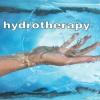The objective of this work was to update the rheumatologic indications of spa therapy, based on clinical practice guidelines published by the French National Authority for Health (HAS) and the European League Against Rheumatism (EULAR), and on the results of randomized clinical trials (RCT)
METHODOLOGY: We first examined the indications for which spa therapy is mentioned and/or recommended in HAS and EULAR guidelines. We then identified RCTs in spa therapy and rheumatology by using the key words spa therapy, balneology, balneotherapy, hydrotherapy, mud therapy and mineral water in the Pubmed, Pascal and Embase databases. Only RCTs including a statistical analysis of between-group outcomes were retained We also examined the possible contribution of RCTs not listed in the bibliography of the guidelines.
RESULTS: RECOMMENDATIONS: spa therapy is recommended by HAS for chronic lower back pain, rank B and for stabilized rheumatoid arthritis, rank C. In ankylosing spondylitis, EULAR classifies spa therapy along with physiotherapy, rank A. In fibromyalgia, EULAR recommends hot-water balneology, an important component of spa therapy, rank B, based on five RCTs, of which three were carried out in thermal springs. Nineteen RCTs that comprised a statistical comparison of between-group outcomes were identified Sixteen studies indicated a persistent improvement (at least twelve weeks) in pain, analgesic and non-steroidal antiinflammatory drug consumption, functional capacity and/or quality of life, in the following indications: chronic lower back pain, knee osteoarthritis, hand osteoarthritis, fibromyalgia, ankylosing spondylitis andrheumatoidarthritis (PR).
CONCLUSION: Spa therapy, or hot-water balneology, appears to be indicated for chronic low back pain, stabilized rheumatoid arthritis, ankylosing spondylitis and fibromyalgia. RCT findings suggest that patients with knee and hand osteoarthritis might also benefit.
 Hydrotherapy, formerly called hydropathy and also called water cure, is a part of alternative medicine, in particular of naturopathy, occupational therapy and physiotherapy, that involves the use of water for pain relief and treatment. The term encompasses a broad range of approaches and therapeutic methods that take advantage of the physical properties of water, such as temperature and pressure, for therapeutic purposes, to stimulate blood circulation and treat the symptoms of certain diseases.
Hydrotherapy, formerly called hydropathy and also called water cure, is a part of alternative medicine, in particular of naturopathy, occupational therapy and physiotherapy, that involves the use of water for pain relief and treatment. The term encompasses a broad range of approaches and therapeutic methods that take advantage of the physical properties of water, such as temperature and pressure, for therapeutic purposes, to stimulate blood circulation and treat the symptoms of certain diseases.